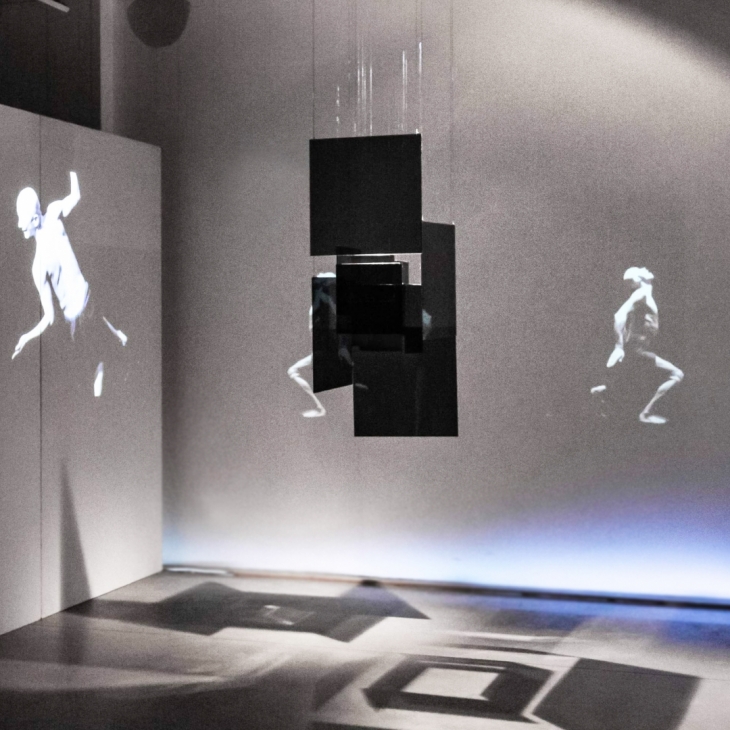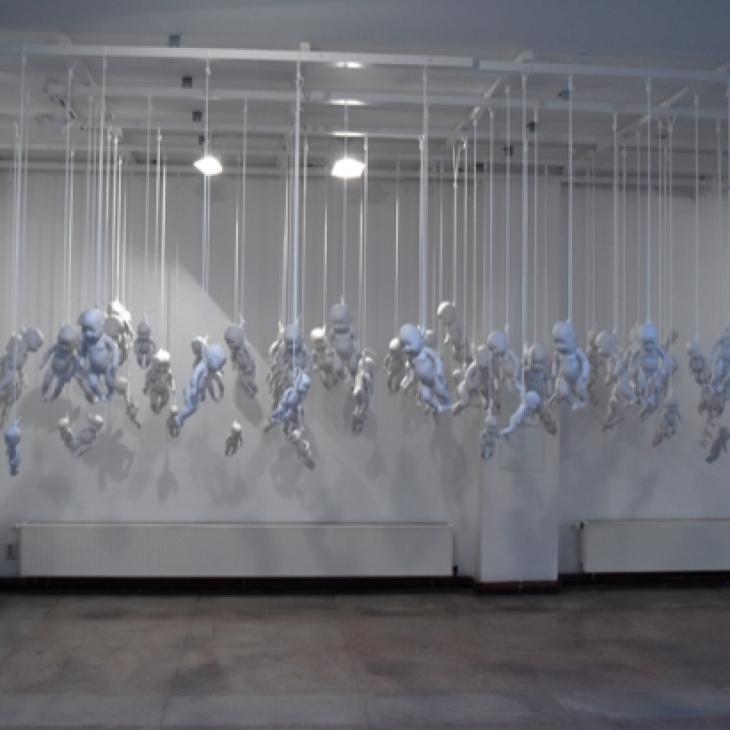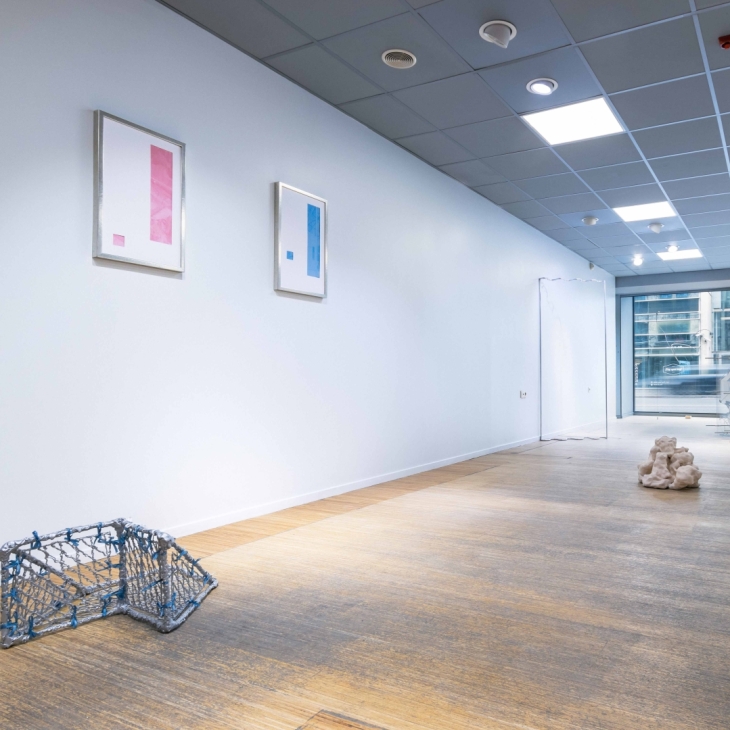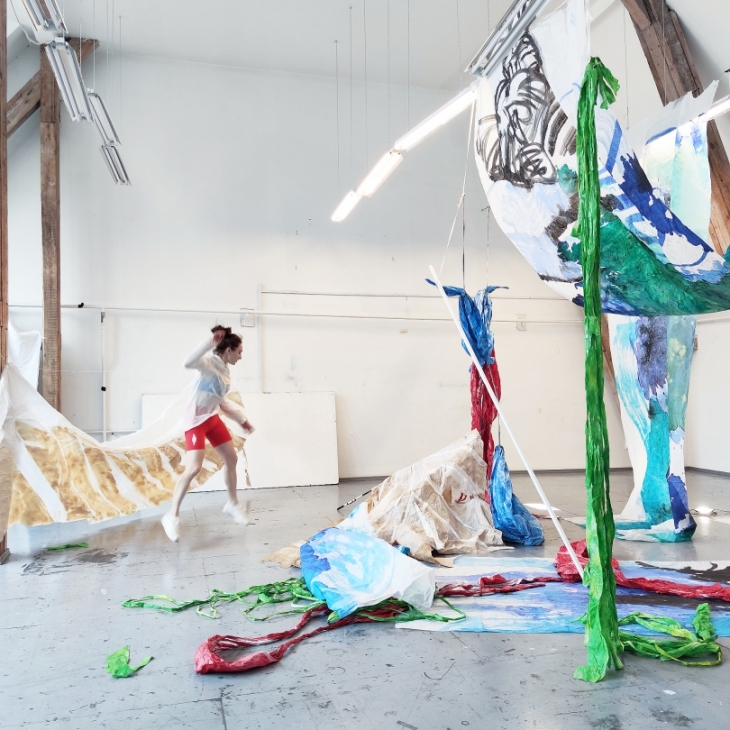The Glass Bead Game, 2021
Plexiglas, wood, stepper motors
The installation was created with the intention to reveal and develop the game concept in theatre art. However it is important to understand the game not as a kind of entertainment, but as a function that is full of meaning. Specifying the notion, the game, according to Hermann Hesse, could be interpreted as a certain abstract dynamic synthesis, based on the identification of hidden internal specifications, associations and correspondences between different arts and sciences. Ability to compile certain origins of art (scenography, dance, music, poetry, drama etc.) with a scientific background (physics, kinetics, robotics, philosophy) can lead to a creation of cunning and profound piece of art.
While working with the visual image of installation, artist tends to appeal to a minimalistic, abstract manner of expression, keeping inside deliberate mechanical principle of interaction. The simplest form of cube could give a birth to an incredible variations of forms. The only thing is human imagination and decision how to play this game. If each plane has its set way of movement, inextricably connected with movement of other planes, driven by an actors plastic, neatly combined with reflective material, it can create mesmerizing game of emerging new worlds and spaces out of a mere form. “When I move, all human beings move. It is like a yoke that represents the feeling of space and of time. And it all moves- this is important. Instead of asking others to move me, I have to move me myself. This is I, this is time, this is space. It is a sacred yoke. I am united.” Image appears to be all and nothing at the same time. One important factor, that made artist immersed more in creating process, was that direct visual image dependancy on its inner mechanism, possibility to combine a game of kinetic science and theatrical art in one. So the deeper artist dives in artistic context, the deeper he cognize kinetics. Such unifying approach spawned not only cognitive function, but also brought up certain understanding, experience through which artist could observe oblivion and demolition of merges between art and science, that seem to be so obvious at the first blush.









